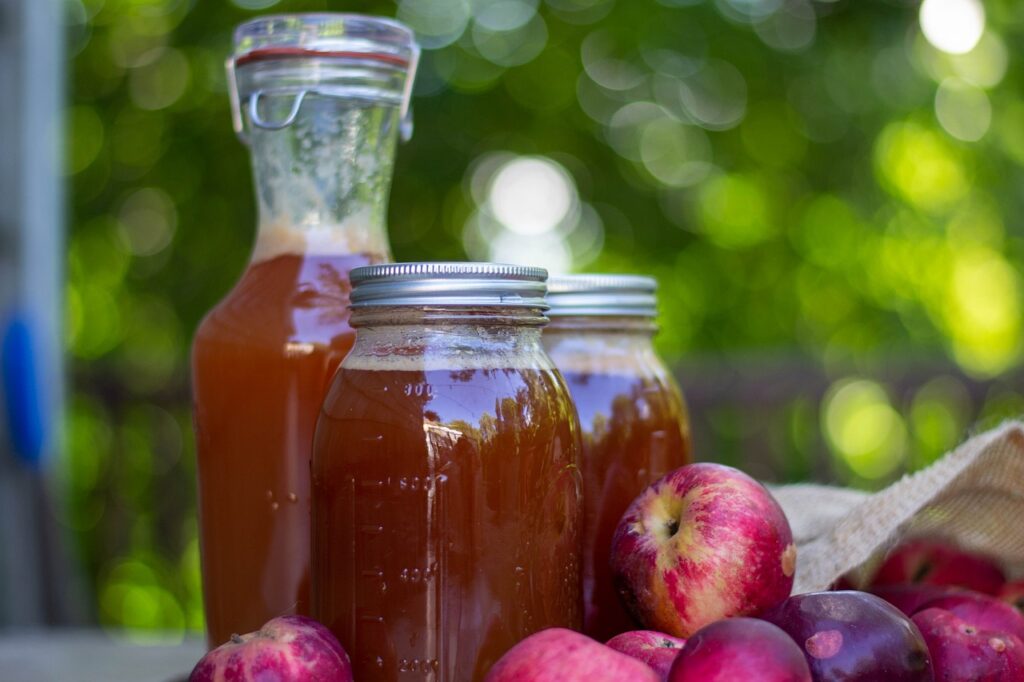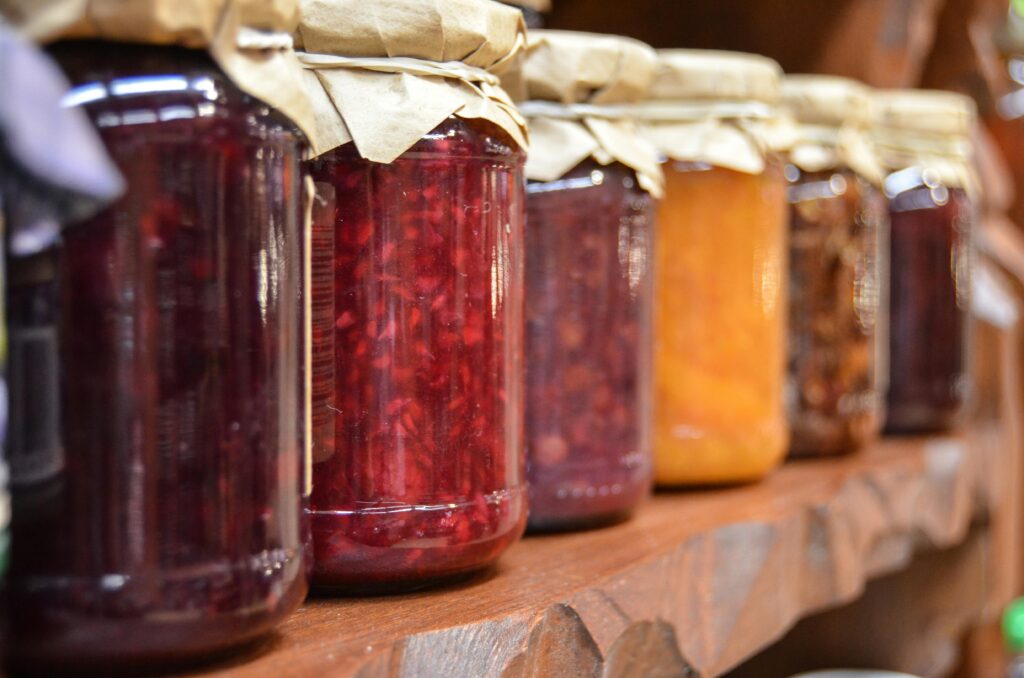The Many Uses of Apple Cider Vinegar: Benefits, Recipes, and Why Homemade is Best

“Making your own ACV ensures you’re getting the purest, most nutrient-packed product straight from nature.”
Apple cider vinegar (ACV) has long been celebrated for its versatility and health benefits. From the kitchen to skincare, cleaning, and even wellness remedies, ACV is a staple in many homes. But did you know that making your own apple cider vinegar can elevate its benefits while also being a sustainable and rewarding process?
In this blog, we’ll dive deep into the many uses of apple cider vinegar, explain why homemade is superior to store-bought, and walk you through the simple steps to create your own.
Ready to start your homesteading journey? Check out this beginner-friendly eBook here.
Why Store-Bought Apple Cider Vinegar Falls Short
While commercial ACV is convenient, it often undergoes filtration, pasteurization, and sometimes contains added preservatives or flavorings. These processes strip away the raw nutrients and probiotics that make ACV so beneficial.
Comparison: Homemade vs. Store-Bought Apple Cider Vinegar
| Feature | Homemade ACV | Store-Bought ACV |
|---|---|---|
| Purity | Unfiltered, raw, with the “mother” | Filtered, pasteurized |
| Additives | None | May include preservatives or flavorings |
| Nutrient Density | High, rich in enzymes and probiotics | Lower due to processing |
| Cost | Minimal (made from scraps) | Often more expensive |
| Sustainability | Zero-waste, eco-friendly | Packaged in plastic or glass |
The Health Benefits of Apple Cider Vinegar

Apple cider vinegar is not just a trendy health product—it’s a natural powerhouse. Here’s why:
1. Aids Digestion
ACV contains acetic acid, which can help promote healthy digestion by breaking down food and encouraging beneficial gut bacteria.
2. Supports Weight Loss
Some studies suggest that consuming ACV can help control appetite and regulate blood sugar levels, making it easier to manage weight .
3. Improves Skin Health
With its antimicrobial properties, ACV can combat acne, soothe irritation, and balance your skin’s pH.
4. Detoxifies Your Body
ACV supports liver and kidney function, helping your body flush out toxins naturally.
5. Natural Energy Boost
Rich in potassium and enzymes, ACV can help combat fatigue and increase energy levels.
How to Make Apple Cider Vinegar at Home
Ready to start your homesteading journey? Check out this beginner-friendly eBook here.
Making ACV at home is simple, sustainable, and cost-effective.
Ingredients and Tools
| Ingredient/Tool | Quantity |
|---|---|
| Apple scraps (peels, cores) | Enough to fill your jar |
| Sugar | 1 tablespoon per cup of water |
| Filtered water | Enough to submerge apples |
| Glass jar | 1 large jar |
| Cheesecloth | For covering the jar |
| Rubber band | To secure the cheesecloth |
Step-by-Step Instructions
- Prepare Your Apple Scraps
Collect apple peels, cores, or bruised apples. Place them in a clean glass jar, leaving a few inches of space at the top. - Mix the Sugar and Water
Dissolve 1 tablespoon of sugar in 1 cup of filtered water. Pour the mixture over the apple scraps, ensuring they’re completely submerged. - Cover and Ferment
Cover the jar with a cheesecloth and secure it with a rubber band. This allows airflow while keeping bugs out. - Stir Daily
Stir the mixture daily to prevent mold and ensure even fermentation. - Strain the Liquid
After 2-3 weeks, strain out the apple scraps. Transfer the liquid to a clean jar and let it ferment for another 3-4 weeks. - Store Your ACV
Once it smells tangy and looks cloudy, your ACV is ready. Store it in an airtight bottle.
Pro Tip: Homemade ACV with the “mother” (a cloudy substance of beneficial bacteria and enzymes) is the most beneficial.
Everyday Uses of Apple Cider Vinegar
Ready to start your homesteading journey? Check out this beginner-friendly eBook here.

In the Kitchen
- Salad Dressing
Mix ACV with olive oil, mustard, and honey for a simple vinaigrette. - Marinade
Use ACV to tenderize meat or flavor vegetables. - Natural Preservative
Add ACV to pickles or sauces to extend their shelf life.
For Skincare and Haircare
- Natural Toner
Dilute ACV with water (1:2 ratio) and use it as a toner to balance skin pH. - Hair Rinse
Combine 2 tablespoons of ACV with 1 cup of water for a shine-boosting rinse.
DIY Recipe:
| Ingredient | Quantity |
|---|---|
| ACV | 2 tablespoons |
| Water | 1 cup |
| Essential oil (optional) | 3 drops for fragrance |
For Cleaning
- All-Purpose Cleaner
Mix equal parts ACV and water in a spray bottle. Add a few drops of essential oil for a fresh scent. - Odor Neutralizer
Place a bowl of ACV in a room to absorb odors.
For Health and Wellness
- Digestive Tonic
Dilute 1 tablespoon of ACV in a glass of warm water and drink before meals. - Immune Booster
Add ACV to herbal tea with honey for a natural immune-boosting elixir.
FAQs About Apple Cider Vinegar
By making your own apple cider vinegar, you’re not only tapping into its health benefits but also embracing a more sustainable and mindful lifestyle. So, gather your apple scraps and give it a try—your body, home, and the planet will thank you!
- How much ACV should I consume daily?
Start with 1 tablespoon diluted in water and adjust based on your tolerance. - Can I use ACV on sensitive skin?
Always dilute ACV to prevent irritation, especially on sensitive skin. - How long does homemade ACV last?
Properly stored, homemade ACV can last up to a year.
Apple Cider Vinegar vs. Store-Bought Alternatives
Apple cider vinegar isn’t the only product where homemade outshines store-bought. Many commercial products, like bread or cleaning supplies, contain additives and chemicals that aren’t present in homemade alternatives.
| Category | Store-Bought | Homemade |
|---|---|---|
| Bread | Preservatives, additives | Fresh, natural |
| ACV | Filtered, pasteurized | Raw, nutrient-rich |
| Cleaning Supplies | Harsh chemicals | Eco-friendly ingredients |
References
- Smith, J. (2021). “The Science of Fermentation.” Food Chemistry Journal.
- Brown, R. (2020). Natural Remedies: Healing Power of Vinegar. Wellness Press.
- Patel, A. (2019). “Eco-Friendly Living with Homemade Products.” Green Home Journal.
- Wilson, T. (2022). “The Probiotic Potential of Fermented Foods.” Gut Health Research Journal.
As an Amazon Affiliate, we earn from qualifying purchases, but at no extra cost to you.

Ready to start your homesteading journey? Check out this beginner-friendly eBook here.


